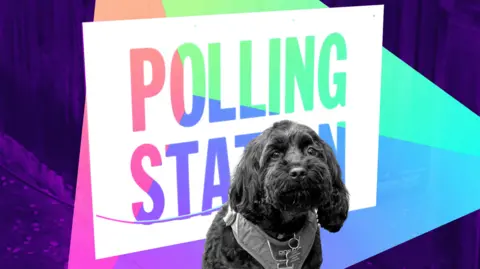Chris Mason’s article titled “A wildly unpredictable local elections” explores the current landscape of the local elections taking place, providing insights into the significance of these elections amidst a backdrop of national political dissatisfaction. Published 30 minutes ago and authored by the political editor Chris Mason, the piece addresses the current sentiments surrounding local contests, particularly as they relate to broader trends within UK politics.
At the outset, Mason compares this year’s local elections to the all-consuming nature of the previous year’s general elections. He stipulates that while the local elections matter significantly in their specific geographic areas, they lack the expansive coverage and emotional weight of the last general election. Several factors contribute to this phenomenon, including the postponement of some local contests due to forthcoming structural changes in local government. As a result, many readers may find that elections are not happening in their parts of the country.
Mason highlights a paradoxical sentiment dominating local politics: a mix of anger and anticipatory indifference. Often, turnout in local elections that do not coincide with a general election is notoriously low. Nevertheless, anecdotal observations from Mason’s reporting in Lincolnshire—a locale preparing to elect its first directly elected mayor—reveal a more complex emotional landscape, where findings from the research group “More in Common” echo sentiments of unease and dissatisfaction regarding the state of the nation.
An important point raised by Mason is that the current political atmosphere could lead to outcomes that are highly unpredictable. With voter turnout potentially dwindling and party support dispersing across various directions, the margin of victory in many contests could be small. This raises critical questions about the legitimacy and mandate of the candidates elected under such circumstances. Political analyst Sir John Curtice’s assertion in the Telegraph regarding the decline of mainstream parties adds weight to this reasoning, as both the Labour and Conservative parties find themselves in precarious positions rather than experiencing the usual dynamic of one party’s ascendancy over the other.
Mason notes that the Conservatives have expressed significant concerns about their prospects in the local elections, a sentiment echoed by figures within the Labour Party. In this context, other parties, such as Reform UK, the Liberal Democrats, and the Green Party, along with independent candidates, emerge as viable contenders for political power. Mason underscores that this period represents a crucial moment for Reform UK, as the party enjoys rising support in opinion polls. The upcoming elections will serve as a litmus test to determine if this support translates into actual electoral victories.
The excitement around the elections is underscored by the pivotal contests scheduled for counting, particularly the parliamentary by-election in Runcorn and Helsby and the race to elect Lincolnshire’s mayor. Mason informs readers that the outcomes from these local elections could shift the political narrative, especially as both the Liberal Democrats and the Green Party hope to increase their representation against the backdrop of declining support for the dominant parties.
In the conclusion of his analysis, Mason suggests that Friday’s results will shape the forthcoming political discourse, encouraging discussions regarding the implications of voter behavior and electoral outcomes. Given the unpredictable nature of this election cycle, the political landscape could witness significant shifts that may reverberate far beyond local contests, impacting national politics as well. The results will be assessed meticulously, providing a clearer picture of how various parties and independent candidates perform in the evolving electoral environment.



